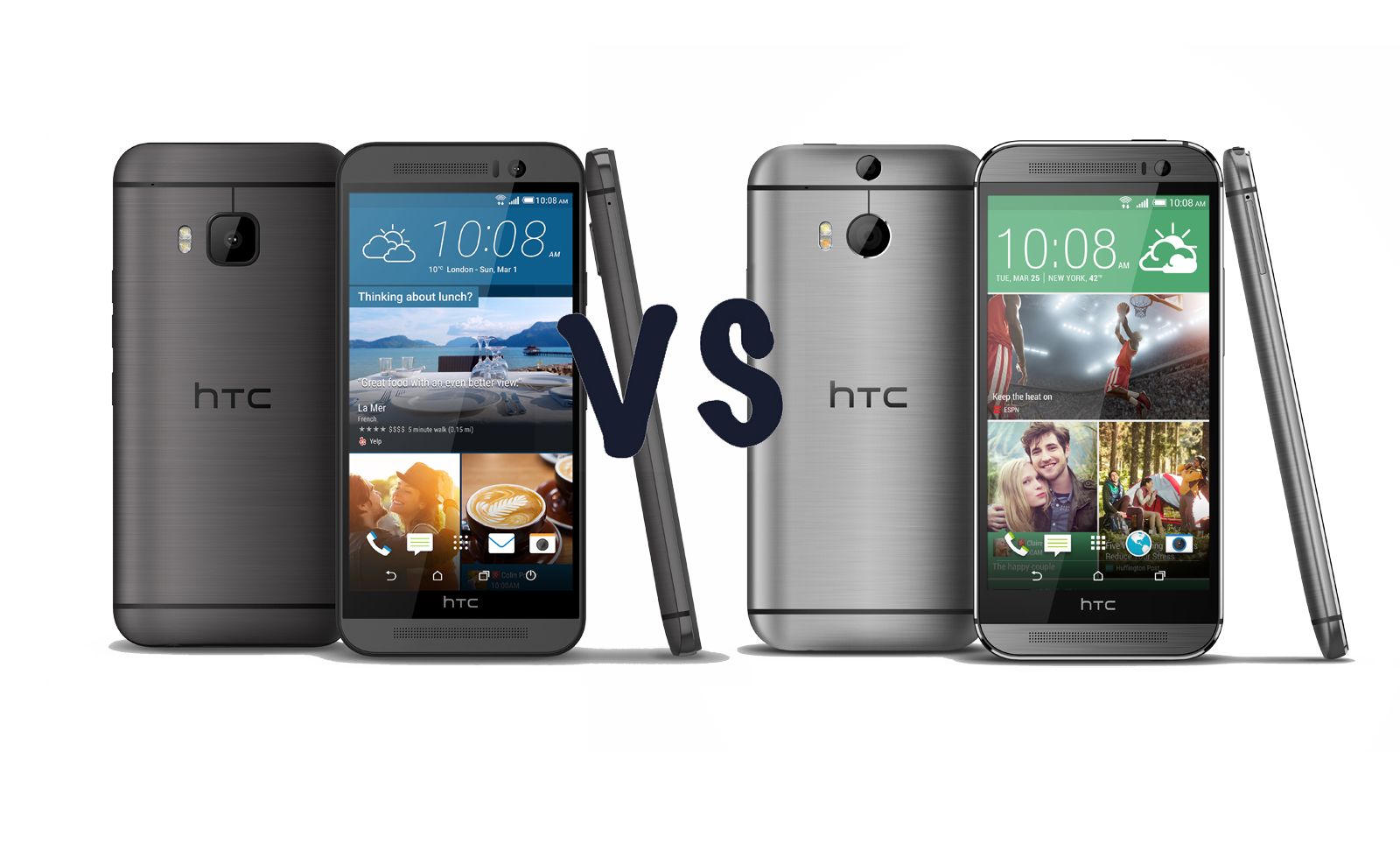HTC announced a new flagship handset, the HTC One M9, at Mobile World Congress 2015. We've now fully reviewed that phone, the replacement for last year's popular One M8.
At first glance it looks to be very similar to the M8. So is this more of the same, or is there more to the HTC One M9 than meets the eye?
We've lived with both phones, reviewed both phones, and here's we're breaking down exactly what the difference are, should be looking to invest or upgrade.
Refining luxury design
The HTC One M9 takes the M8 design and refines it. It sticks to premium materials, so you get a metal handset with similar design lines to the M8. However, the quality of the finish is now much enhanced, as the M9 makes the front much more seamless than the M8.
The HTC One M9 measures 144.6 x 69.7 x 9.61mm and weighs 157g compared to the 146.36 x 70.6 x 9.35mm and 160g of the M8. The new phone is slightly smaller and very slightly lighter, but not by much. At a quick glance, there isn't a huge amount to tell them apart.
Display stays the same
As these phones are so close in size, it's no surprise to discover that the display has stayed the same size, at 5 inches.
Not only is it the same size, but it's the same resolution too, at 1920 x 1080 pixels, 440ppi. That means it's as crisp, sharp and capable as the M8. There is no move to Quad HD like some rivals, but at this size that probably doesn't matter.
However, we found that our review M9 didn't have quite the punch of the M8 we've been using for the last year: the colours were a little more muted. With that in mind, the display doesn't appear to have moved forward.
Power boost
The HTC One M9 comes equipped with a Qualcomm Snapdragon 810 chipset, bringing support for the 64-bit Android Lollipop software. There's 3GB of RAM and 32GB of internal storage, with microSD card support.
The HTC One M8 has a Snapdragon 801 with 2GB of RAM and 16GB of storage. It's a step up for the M9 in all areas, giving you a phone that is faster and more powerful. The M8 was slick and fast and there isn't a huge difference in day-to-day tasks like reading Facebook or Twitter. Games are a little smoother, but not hugely so.
There's a larger 2840mAh battery in the M9, expanded over the 2600mAh of the M8. Although the new chipset should be more power efficient, that doesn't lead to better battery performance, which is comparable between the M8 and M9. Again, there's no real advancement from the M9, which is a shame.
The boost in storage is welcome though: starting at 32GB rather than 16GB means more space to store your apps and content.
Cameras
The camera is one of the weaknesses of the M8, something that HTC was looking to correct in the M9. Duo Camera is gone, UltraPixel moves to the front and the rear gets a 20-megapixel sensor.
The front camera on the M9 works well, delivering nice detailed selfies, but in low light these are marred by a pink/magenta tinge. In daylight they are good quality however, better than the M8.
The rear camera is blighted by plenty of problems, however. Focusing is slower than M8 and it struggles with quality and white balance, delivering slightly green/yellow tinged images in bright conditions. Low light performance is poor, worse than the M8.
Overall, the camera isn't a fix in the M9 and one year on from the M8, it doesn't give you good results.
BoomSound gets Dolby
HTC has BoomSound speakers on both the HTC One M8 and the new M9. They look the same and sound pretty much the same too.
HTC has now partnered with Dolby meaning the BoomSound is now enhanced with two modes on the M9. The first is for music and the second is a more immersive surround sound Theater mode that's great for movies and gaming.
Dolby's partnership also means that the bundled headphones have been tuned for better results and there's a dual driver set of headphones as an optional accessory for those looking to take the music quality even higher.
Software tweaks
The HTC One M9 launches with Android 5.0 Lollipop and Sense 7. Sense 7 brings a range of new features, like a new Sense Home app widget, enhanced recommendations though BlinkFeed, like suggesting where to eat, more Gallery editing options and Themes, to completely customise the look of your phone.
The HTC One M8 has been updated to Android 5.0 Lollipop and offers Sense 6. There's no word on when an update to Sense 7 might be arriving, but we suspect the M8 will soon have a similar software set to the M9.
Sense 7 isn't a huge change over Sense 6. Using both side by side, many of the differences tweak the experience, rather than bringing anything new.
Summing up
There are plenty of changes between these two devices, but the big ones are power and the cameras. The design has been refined greatly on the M9, but visually they are pretty similar, and both are high build quality.
The M9 is more powerful and has a larger battery, but that battery lasts no longer and the power change isn't hugely different in daily use, but will be slicker and faster in gaming.
The changes in camera don't bring you better photos. The M9 is more conventional and the front camera improved, but the camera remains the weakness of both devices.
The software options should also be the same in the future, so the M9 doesn't bring you a huge amount. The HTC One M9 is available for £579 SIM free, the HTC One M8 is available for £370, making the old device something of a bargain.

